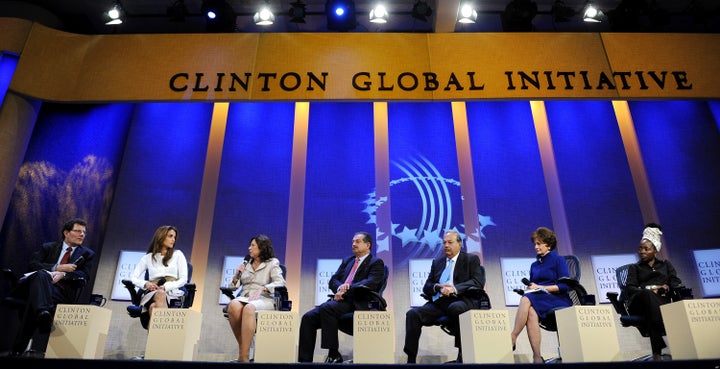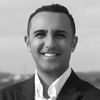
At the 2010 Clinton Global Initiative held last week in New York City, I interviewed Yvette Alberdingk-Thijm, Executive Director of WITNESS, an international human rights organization that provides training and support to local groups to use video in their human rights advocacy campaigns.
What brings you to the 2010 Clinton Global Initiative?
CGI is an incredible opportunity for an NGO like WITNESS to participate in and to build the right networks. We've been around for nearly 20 years. Peter Gabriel, the musician and activist, founded WITNESS and we work with human rights defenders all over the world. We train them to use video to address human rights violations. This year at CGI it's very much technology-focused and it's very much about addressing violence against women, which we've just launched a commitment to address. Our focus is on training grassroots organizations in conflict and post conflict zones to use video to document human rights violations and violence against women. So I think we're a perfect fit right now.
And how has WITNESS evolved since its founding to where it is today?
That's actually a really good question. WITNESS really started when Peter Gabriel, was on a Human Rights Now tour with Amnesty International and he went around the world and he met people who's family members had been killed or who suffered human rights violations themselves. And he had a big clunky video camera with him and he realized that even though people can tell you their story, those stories can be buried and forgotten unless you utilize the enormous power of video such that you can turn somebody's personal story of abuse into a powerful tool for justice.
And right after that, the Rodney King incident happened, which really put the camcorder on the map and WITNESS started by sending video cameras all over the world. The notion was always, what if every human rights defender had a camera in their hand, what would they film and what could they change? As we say, "See it, film it, change it," but then when footage came back we realized that people needed training. So it's one thing to document something as it happens and then it's also a different thing to use that video very strategically in an advocacy campaign to create lasting change. So in the past 18 years WITNESS really has evolved to train human rights activists in what we call "video advocacy." We work very closely with local partners because they know the issue best and they know the solutions best. What we bring to the campaign is training in how to use visual storytelling as a very powerful tool.
And what are some concrete examples of using video advocacy to impact policy change?
One example is work we've been supporting in Kenya with an indigenous group and with a local organization. The Endorois were forcibly evicted from their land, which is their ancestral land they've lived on for many generations. And they tried to fight that eviction through the courts. And we worked with the human rights group CEMIRIDE to produce the Enderois' community's story visually and that story catalyzed the campaign because all of a sudden you see these men standing in front of this beautiful lake talking about how this is their land and this is how they feed their families and this is where the cattle grazes, and how important it is to them.
In the end, that video came in front of the African Commission for People and Human Rights. Literally, after decades of struggle, the African Commission said, "You're right. You were forcibly evicted." And they were basically given the right to their land back. So it was really a good example of how when you add video it really moves people to action and if you get that in front of the right decision-makers it can make a difference.
And within the model of how WITNESS operates, do individuals in the field send videos directly to your organization or what does that process entail?
It's about capacity building, so it's really about making sure that we train our partners how to use video. We're training human rights defenders so we're often training them to use a camera for the first time. But its more than just how to use a camera. We edit together with them. Sometimes we edit in the field and sometimes they actually come to New York to edit videos together, but in the end, the whole point is that they have another tool that they can use, and that they have the capacity to use this tool on their campaigns in the future.
And who are your biggest partners, whether in advocacy and policy work, or training and education?
Our partners are amazing, courageous grassroots organizations. For example, we've worked with a group in Brazil working to abolish slavery or address slavery issues; we have a partner in India where people are protecting the rights of garbage pickers; we have a partner in the U.S. in the fight to end elder abuse.
What we're announcing here at the Clinton Global Initiative is that instead of just having one local partner organization, we are partnering with a network of grassroots organizations to increase our impact.
In this case we said, "What if we would work with a network as opposed to just one organization?" So our partner is the Women's Initiatives for Gender Justice, which is a coalition of grassroots groups that work in conflict and post-conflict zones in five African countries to document violence against women. Now we will be training 50 organizations, putting video cameras in their hands and training them how to use them. And then train them how to strategically and tactically use those videos to create lasting change and obtain justice. It may be the case where the local militia in Uganda has raped a woman, and those videos need to come in front of the International Criminal Court as evidentiary support to build a case against the militia leaders. Or it may be that that women who have been raped in the Democratic Republic of Congo face stigma barring their re-integration into their community and videos are created to address this stigma. In this case, it's about getting the video in front of the elders of the woman's communities, to start a conversation. So the uses of video will vary but the campaign videos will all address violence against women with the hope to, in the end violence against women.
I would imagine that in many cases the individuals who have these cameras and either tell their story or take courageous footage, put their own safety and security in jeopardy, so how is this delicate balance realized?
It's a really good question. A huge part of our expertise and training is in safety and security issues and so we take those issues very seriously. There's a lot you can do to secure both offline and online safety of the person taking the footage, or appearing in the video but you can never make people 100 percent safe, unfortunately. We are working with women in Zimbabwe who were targeted for their political affiliation and were beaten, raped and tortured. And some of those women after having been counseled really carefully on the safety and security implication still decided to speak out because they felt that that their story needed to be seen and heard by the right people in order to become a tool for justice.
Where does WITNESS see itself in five or 10 years as an organization uniquely positioned in the video advocacy space?
That's another really good question. WITNESS has always worked with grassroots organizations on the ground -- human rights organizations. Now four billion people have video-enabled cameras, phones or devices in their hands and now you have students in Iran who are documenting what's happening to them. We need to make sure that WITNESS is adapting to the changing environment; after all, anyone can be a witness, right?
So our focus now is on the effectiveness of all of those potential millions of activists. We're trying to reach a larger group of people by creating e-learning toolkits to get that curriculum out to people so that anybody with a camera in their hands can actually make a difference. And the other thing we're doing is we're engaging with the platforms where a lot of human rights video shows up. If a student in Iran uploads a video onto YouTube and all the Iranian Government has to do is go onto YouTube to track down that person, then we need to make sure that those spaces become more conducive to protecting human rights.
For example, what would happen if you could have a little application or piece of software that could blur somebody's face to protect him or her built into your camera-enabled device? It's really important because we think that over the next five or 10 years, access to the Internet will increase and activists can make good use of these tools.
Speaking of Iran, what's stopping the government or anyone from falsifying their own videos and processing the 'evidence' through the same route?
Nothing basically. With so many people documenting what's really happening, for example, the power of the crowd is actually very important and I think that in the end hopefully there is always going to be more of us than "them." But it's true that technology is also a powerful tool in the hands of a repressive regime.
Once the election riots broke out in Iran, and the safety and security of protestors, dissidents and the opposition was in jeopardy, any of them leaving the country was asked about their Facebook account, presumably to track them and their friends who were participating in such activities. So technology can certainly be used to perpetrate human rights violations, too.
I think that's always been the case, in fact many recent examples of human rights abuses on video and in photographs was actually captured by perpetrators of those abuses. Educating activists about how to use online tools and applications safely and securely should be a priority of the human rights community in the short and long term. There are some people doing really incredible work at the moment on digital safety and security, but there are other people who are doing really good work on just educating people in the human rights aspect of these spaces. And that's very important because the spaces are moving really fast so we've always been an organization that really believes in the power of technology, and particularly if it's in the hands of people on the ground. That comes with the education to use those tools very safely and effectively.
What drove you to join the WITNESS organization?
Yvette Alberdingk-Thijm: I became the Executive Director of WITNESS two years ago.I served four years on the WITNESS Board. It is an incredible organization. It's a social entrepreneur. It's an innovator and it functions on the cross section of technology, media, and human rights. With regard to my background, I'm a lawyer I've worked for years in for-profit media and I worked for a technology startup. And I have a big passion obviously for truth, justice and technology. So to me, that combination drives not only those within WITNESS, but those who support us as well; they all believe in film technology and human rights so it's a nice combination.
Cross-posted with RahimKanani.com
